Basic Facts about Numerical Simulations of Atmospheric Composition in the City of Sofia
Abstract
:1. Introduction
2. Materials and Methods
- SNAP 1 (Combustion in energetics) reduced with factor 0.8;
- SNAP 2 (Non-industrial combustion plants) reduced with factor 0.8;
- SNAP 3 (Combustion in manufacturing industry) reduced with factor 0.8;
- Production processes;
- Extraction and distribution of fossil fuels;
- Solvent and other product use;
- SNAP 7 (Road transport) reduced with factor 0.8;
- Other mobile sources and machinery;
- Waste treatment and disposal;
- Agriculture.
3. Results
3.1. Characteristics of the Numerically Obtained Concentration Fields, Contribution of Different Emission Sources and Different Dynamic and Chemical Processes to the Atmospheric Composition in Sofia
3.2. Characteristics of the Numerically Obtained Concentration Fields, Contribution of Different Emission Sources and Different Dynamic and Chemical Processes to the Atmospheric Composition in Orlov Most
3.3. Characteristics of the Numerically Obtained Concentration Fields, Contribution of Different Emission Sources and Different Dynamic and Chemical Processes to the Atmospheric Composition in Bistritsa
4. Conclusions
Author Contributions
Funding
Institutional Review Board Statement
Informed Consent Statement
Data Availability Statement
Acknowledgments
Conflicts of Interest
References
- Syrakov, D.; Etropolska, I.; Prodanova, M.; Slavov, K.; Ganev, K.; Miloshev, N.; Ljubenov, T. Downscaling of Bulgarian Chemical Weather Forecast from Bulgaria Region to Sofia City, American Institute of Physics. Conf. Proc. 2013, 1561, 120–132. [Google Scholar]
- Dimitrova, R.; Velizarova, M. Assessment of the Contribution of Different Particulate Matter Sources on Pollution in Sofia City. Atmosphere 2021, 12, 423. [Google Scholar] [CrossRef]
- Georgieva, I.; Gadzhev, G.; Ganev, K.; Miloshev, N. Analysis of The Contribution of Different Processes (Chemical and Dynamical) Which form the Atmospheric Composition in Sofia. In Proceedings of the 19th International Conference on Harmonisation within Atmospheric Dispersion Modelling for Regulatory Purposes, Bruges, Belgium, 3–6 June 2019. [Google Scholar]
- Gadzhev, G.; Georgieva, I.; Ganev, K.; Miloshev, N. Contribution of Different Emission Sources to the Atmospheric Composition Formation in City of Sofia. Int. J. Environ. Pollut. 2018, 64, 47–57. [Google Scholar] [CrossRef]
- Gadzhev, G.; Georgieva, I.; Ganev, K.; Ivanov, V.; Miloshev, N.; Chervenkov, H.; Syrakov, D. Climate Applications in a Virtual Research Environment Platform. Scalable Comput. Pract. Exp. 2018, 19, 107–118. [Google Scholar] [CrossRef] [Green Version]
- Gadzhev, G.; Ganev, K.; Mukhtarov, P. HPC Simulations of the Atmospheric Composition Bulgaria’s Climate (on the Example of Coarse Particulate Matter Pollution). In Proceedings of the International Conference on High Performance Computing, Borovets, Bulgaria, 2–6 September 2019; Studies in Computational Intelligence; Springer: Cham, Switzerland, 2021; pp. 221–233. [Google Scholar]
- Gadzhev, G.; Ganev, K.; Mukhtarov, P. Statistical Moments of the Vertical Distribution of Air Pollution Over Bulgaria. In Proceedings of the 12th International Conference on Large-Scale Scientific Computing, Sozopol, Bulgaria, 10–14 June 2019; Lirkov, I., Margenov, S., Eds.; Lecture Notes in Computer Science (including subseries Lecture Notes in Artificial Intelligence and Lecture Notes in Bioinformatics); Springer: Cham, Switzerland, 2020; pp. 213–219. [Google Scholar]
- Gadzhev, G.; Ganev, K. Vertical Structure of Some Pollutant Over Bulgaria-Ozone and Nitrogen Dioxide. SGEM 2018, 18, 449–454. [Google Scholar] [CrossRef]
- Gadzhev, G.; Ganev, K.; Miloshev, N. Numerical Study of the Atmospheric Composition Climate of Bulgaria-Validation of the Computer Simulation Results. Int. J. Environ. Pollut. 2015, 57, 189–201. [Google Scholar] [CrossRef]
- Gadzhev, G.; Ganev, K.; Miloshev, N.; Syrakov, D.; Prodanova, M. HPC Simulations of the Fine Particulate Matter Climate of Bulgaria. In Proceedings of the 8th International Conference on Numerical Methods and Applications, Borovets, Bulgaria, 20–24 August 2014; Lecture Notes in Computer Science (Including Subseries Lecture Notes in Artificial Intelligence and Lecture Notes in Bioinformatics); Springer: Cham, Switzerland, 2015; pp. 178–186. [Google Scholar] [CrossRef]
- Gadzhev, G.; Ganev, K.; Miloshev, N.; Syrakov, D.; Prodanova, M. Analysis of the Processes Which form the Air Pollution Pattern over Bulgaria. In Proceedings of the 9th International Conference on Large-Scale Scientific Computations, Sozopol, Bulgaria, 3–7 June 2013; Lecture Notes in Computer Science (Including Subseries Lecture Notes in Artificial Intelligence and Lecture Notes in Bioinformatics); Springer: Berlin/Heidelberg, Germany, 2014; pp. 390–396. [Google Scholar] [CrossRef]
- Gadzhev, G.; Ganev, K.; Miloshev, N.; Syrakov, D.; Prodanova, M. Some Basic Facts about the Atmospheric Composition in Bulgaria-Grid Computing Simulations. In Proceeding of the 9th International Conference on Large-Scale Scientific Computations, Sozopol, Bulgaria, 3–7 June 2013; Lecture Notes in Computer Science (Including Subseries Lecture Notes in Artificial Intelligence and Lecture Notes in Bioinformatics); Springer: Berlin/Heidelberg, Germany, 2014; pp. 484–490. [Google Scholar] [CrossRef]
- Gadzhev, G.; Ganev, K.; Prodanova, M.; Syrakov, D.; Atanasov, E.; Miloshev, N. Multi-Scale Atmospheric Composition Modelling for Bulgaria. In Air Pollution Modeling and Its Application XXII; NATO Science for Peace and Security Series C: Environmental Security; Springer: Dordrecht, The Netherlands, 2013; Volume 137, pp. 381–385. [Google Scholar]
- Gadzhev, G.; Ganev, K.; Prodanova, M.; Syrakov, D.E.; Miloshev, N.; Georgiev, G. Some Numerically Studies of the Atmospheric Composition Climate of Bulgaria. In Proceeding of the AIP Conference Proceedings, Proceedings of the 5th International Conference for Promoting the Application of Mathematics in Technical and Natural Sciences, Albena, Bulgaria, 24–29 June 2013; pp. 100–111. [Google Scholar] [CrossRef]
- Brandiyska, A.; Ganev, K.; Syrakov, D.; Prodanova, M.; Miloshev, N.; Gadzhev, G. Bulgarian Emergency Response System for Release of Hazardous Pollutants-Brief Description and Some Examples. Int. J. Environ. Pollut. 2012, 50, 3–11. [Google Scholar] [CrossRef]
- Gadzhev, G.; Ganev, K.; Syrakov, D.; Miloshev, N.; Prodanova, M. Contribution of Biogenic Emissions to the Atmospheric Composition of the Balkan Region and Bulgaria. Int. J. Environ. Pollut. 2012, 50, 130–139. [Google Scholar] [CrossRef]
- Gadzhev, G.; Syrakov, D.; Ganev, K.; Brandiyska, A.; Miloshev, N.; Georgiev, G.; Prodanova, M. Atmospheric Composition of the Balkan Region and Bulgaria. Study of the Contribution of Biogenic Emissions. In Proceeding of the AIP Conference Proceedings, Proceedings of the 3th International Conference on Application of Mathematics in Technical and Natural Sciences, Albena, Bulgaria, 20–25 June 2011; pp. 200–209. [Google Scholar]
- Todorova, A.; Gadzhev, G.; Jordanov, G.; Syrakov, D.; Ganev, K.; Miloshev, N.; Prodanova, M. Numerical Study of Some High PM10 Level Episodes. Int. J. Environ. Pollut. 2011, 46, 69–82. [Google Scholar] [CrossRef]
- Ganev, K.; Syrakov, D.; Todorova, A.; Gadzhev, G.; Miloshev, N.; Prodanova, M. Study of regional dilution and transformation processes of the air pollution from road transport. Int. J. Environ. Pollut. 2011, 44, 62–70. [Google Scholar] [CrossRef]
- Todorova, A.D.; Ganev, K.G.; Syrakov, D.E.; Prodanova, M.; Georgiev, G.J.; Miloshev, N.G.; Gadjhev, G.K. Bulgarian Emergency Response System for Release of Hazardous Pollutants-Design and First Tests. In Air Pollution Modeling and Its Application XXI; NATO Science for Peace and Security Series C: Environmental Security; Steyn, D., Trini Castelli, S., Eds.; Springer: Dordrecht, The Netherlands, 2011; pp. 263–268. [Google Scholar] [CrossRef]
- Gadzhev, G.; Jordanov, G.; Ganev, K.; Prodanova, M.; Syrakov, D.; Miloshev, N. Atmospheric Composition Studies for the Balkan Region. In Proceedings of the 7th International Conference on Numerical Methods and Applications, Borovets, Bulgaria, 20–24 August 2010; Lecture Notes in Computer Science (Including Subseries Lecture Notes in Artificial Intelligence and Lecture Notes in Bioinformatics); Springer: Berlin/Heidelberg, Germany, 2011; pp. 150–157. [Google Scholar]
- Gadzhev, G.; Ganev, K.; Jordanov, G.; Miloshev, N.; Todorova, A.; Syrakov, D.; Prodanova, M. Transport and Transformation of Air Pollution from Road and Ship Transport-Joint Analysis of Regional Scale Impacts and Interactions. In Proceedings of the International Conference on Transport, Atmosphere and Climate, Aachen, Germany, Maastricht, The Netherlands, 22–25 June 2009; pp. 33–37. [Google Scholar]
- Ganev, K.; Syrakov, D.; Gadzhev, G.; Prodanova, M.; Jordanov, G.; Miloshev, N.; Todorova, A. Joint Analysis of Regional Scale Transport and Transformation of Air Pollution from Road and Ship Transport. In Proceedings of the 7th International Conference on Large-Scale Scientific Computations, Sozopol, Bulgaria, 4–8 June 2009; Lecture Notes in Computer Science (Including Subseries Lecture Notes in Artificial Intelligence and Lecture Notes in Bioinformatics); Springer: Berlin/Heidelberg, Germany, 2010; pp. 180–187. [Google Scholar] [CrossRef]
- Todorova, A.; Gadzhev, G.; Jordanov, G.; Syrakov, D.; Ganev, K.; Miloshev, N.; Prodanova, M. Numerical Study of Some High PM10 Levels Episodes. In Proceedings of the 7th International Conference on Large-Scale Scientific Computations, Sozopol, Bulgaria, 4–8 June 2009; Lecture Notes in Computer Science (Including Subseries Lecture Notes in Artificial Intelligence and Lecture Notes in Bioinformatics); Springer: Berlin/Heidelberg, Germany, 2010; pp. 223–230. [Google Scholar] [CrossRef]
- Todorova, A.; Syrakov, D.; Gadjhev, G.; Georgiev, G.; Ganev, K.G.; Prodanova, M.; Miloshev, N.; Spiridonov, V.; Bogatchev, A.; Slavov, K. Grid Computing for Atmospheric Composition Studies in Bulgaria. Earth Sci. Inform. 2010, 3, 259–282. [Google Scholar] [CrossRef]
- San, J.R.; Pérez, J.L.; Gonzalez-Barras, R.M. The Use of LES CFD Urban Models and Mesoscale Air Quality Models for Urban Air Quality Simulations. In Proceedings of the 1st International Conference on Environmental Protection and Disaster Risks EnviroRISK 2020, Sofia, Bulgaria, 29–30 September 2020; Dobrinkova, N., Gadzhev, G., Eds.; Studies in Systems, Decision and Control; Springer: Cham, Switzerland, 2021; pp. 185–189. [Google Scholar] [CrossRef]
- Gryning, S.E.; Batchvarova, E. Advances in Urban Dispersion Modelling. In Advances in Air Pollution Modeling for Environmental Security; NATO Science Series (Series IV: Earth and Environmental, Series); Faragó, I., Georgiev, K., Havasi, Á., Eds.; Springer: Dordrecht, The Netherlands, 2005; Volume 54. [Google Scholar] [CrossRef]
- Karagiannidis, A.; Poupkou, A.; Giannaros, T.; Giannaros, C.; Melas, D.; Argiriou, A. The Air Quality of a Mediterranean Urban Environment Area and Its Relation to Major Meteorological Parameters. Water Air Soil Pollut. 2015, 226, 2239. [Google Scholar] [CrossRef]
- Zanis, P.; Katragkou, E.; Markakis, K.; Lysaridis, I.; Poupkou, A.; Melas, D.; Kanakidou, M.; Psiloglou, B.; Gerasopoulos, E.; Zerefos, C.; et al. Effects on Surface Atmospheric Photo-Oxidants over Greece during the Total Solar Eclipse Event of 29 March 2006. Atmos. Chem. Phys. 2007, 7, 6061–6073. [Google Scholar] [CrossRef] [Green Version]
- Poupkou, A.; Symeonidis, P.; Lisaridis, I.; Melas, D.; Ziomas, I.; Yay, O.D.; Balis, D. Effects of Anthropogenic Emission Sources on Maximum Ozone Concentrations over Greece. Atmos. Res. 2008, 89, 374–381. [Google Scholar] [CrossRef]
- Katragkou, E.; Zanis, P.; Tegoulias, I.; Melas, D.; Krüger, B.C.; Huszar, P.; Halenka, T.; Rauscher, S. Decadal Regional Air Quality Simulations over Europe in Present Climate: Near Surface Ozone Sensitivity to External Meteorological Forcing. Atmos. Chem. Phys. 2010, 9, 10675–10710. [Google Scholar] [CrossRef] [Green Version]
- Kanakidou, M.; Mihalopoulos, N.; Kindap, T.; Im, U.; Vrekoussis, M.; Gerasopoulos, E.; Dermitzaki, E.; Unal, A.; Kocak, M.; Markakis, K.; et al. Megacities as Hot Spots of Air Pollution in the East Mediterranean. Atmos. Environ. 2010, 45, 1223–1235. [Google Scholar] [CrossRef]
- Im, U.; Poupkou, A.; Incecik, S.; Markakis, K.; Kindap, T.; Unal, A.; Melas, D.; Yenigun, O.; Topcu, S.; Odman, M.T.; et al. The Impact of Anthropogenic and Biogenic Emissions on Surface Ozone Concentrations in Istanbul. Sci. Total Environ. 2011, 409, 1255–1265. [Google Scholar] [CrossRef] [PubMed]
- Juda-Rezler, K.; Reizer, M.; Huszar, P.; Krüger, B.C.; Zanis, P.; Syrakov, D.; Katragkou, E.; Trapp, W.; Melas, D.; Chervenkov, H.; et al. Modelling the effects of climate change on air quality over Central and Eastern Europe: Concept evaluation and projections. Clim. Res. 2012, 53, 179–203. [Google Scholar] [CrossRef] [Green Version]
- Marécal, V.; Peuch, V.-H.; Andersson, C.; Andersson, S.; Arteta, J.; Beekmann, M.; Benedictow, A.; Bergström, R.; Bessagnet, B.; Cansado, A.; et al. A Regional Air Quality Forecasting System over Europe: The MACC-II Daily Ensemble Production. Geosci. Model Dev. 2015, 8, 2777–2813. [Google Scholar] [CrossRef] [Green Version]
- Shamarock, W.C.; Klemp, J.B.; Dudhia, J.; Gill, D.O.; Barker, D.M.; Duda, M.G.; Huang, X.-y.; Wang, W.; Powers, J.G. A Description of the Advanced Research WRF Version 3. 2007. Available online: https://opensky.ucar.edu/islandora/object/technotes%3A500/datastream/PDF/view (accessed on 20 October 2021).
- Byun, D.; Young, J.; Gipson, G.; Godowitch, J.; Binkowski, F.S.; Roselle, S.; Benjey, B.; Pleim, J.; Ching, J.; Novak, J.; et al. Description of the Models-3 Community Multiscale Air Quality (CMAQ) Modeling System. In Proceedings of the 10th Joint Conference on the Applications of Air Pollution Meteorology with the A&WMA; Phoenix, AZ, USA, 11–16 January 1998, pp. 264–268. Available online: http://www.epa.gov/asmdnerl/models3/doc/science/science.html (accessed on 20 October 2021).
- Byun, D.; Ching, J. Science Algorithms of the EPA Models-3 Community Multiscale Air Quality (CMAQ) Modeling System. Available online: https://cfpub.epa.gov/si/si_public_record_report.cfm?dirEntryId=63400&Lab=NERL (accessed on 20 October 2021).
- SMOKE v3.5.1 User’s Manual; The University of North Carolina at Chapel Hill: Chapel Hill, NC, USA, 2013; Available online: https://www.cmascenter.org/smoke/documentation/3.5.1/manual_smokev351.pdf (accessed on 20 October 2021).
- Vestreng, V. Emission Data Reported to UNECE/EMEP: Evaluation of the Spatial Distribution of Emissions. Meteorological Synthesizing Centre-West; The Norwegian Meteorological Institute: Oslo, Norway, 2001; Research Note 56, EMEP/MSC-W Note 1. [Google Scholar]
- Visschedijk, A.J.H.; Zandveld, P.Y.J.; Denier van der Gon, H.A.C. A High Resolution Gridded European Emission Database for the EU Integrate Project GEMS. Available online: http://lap.physics.auth.gr/gems/docu/TNO%20Short%20Emissions%20Report.pdf (accessed on 20 October 2020).
- Denier van der Gon, H.; Visschedijk, A.; van de Brugh, H.; Droge, R. A High Resolution European Emission Data Base for the Year 2005; TNO-Report TNO-034-UT-2010-01895 RPT-ML; Environment, Health and Safety: Utrecht, The Netherlands, 2010. Available online: https://webdosya.csb.gov.tr/db/necen/editordosya/file/NEC/MACC_Training/TNO_PAREST.pdf (accessed on 20 October 2020).
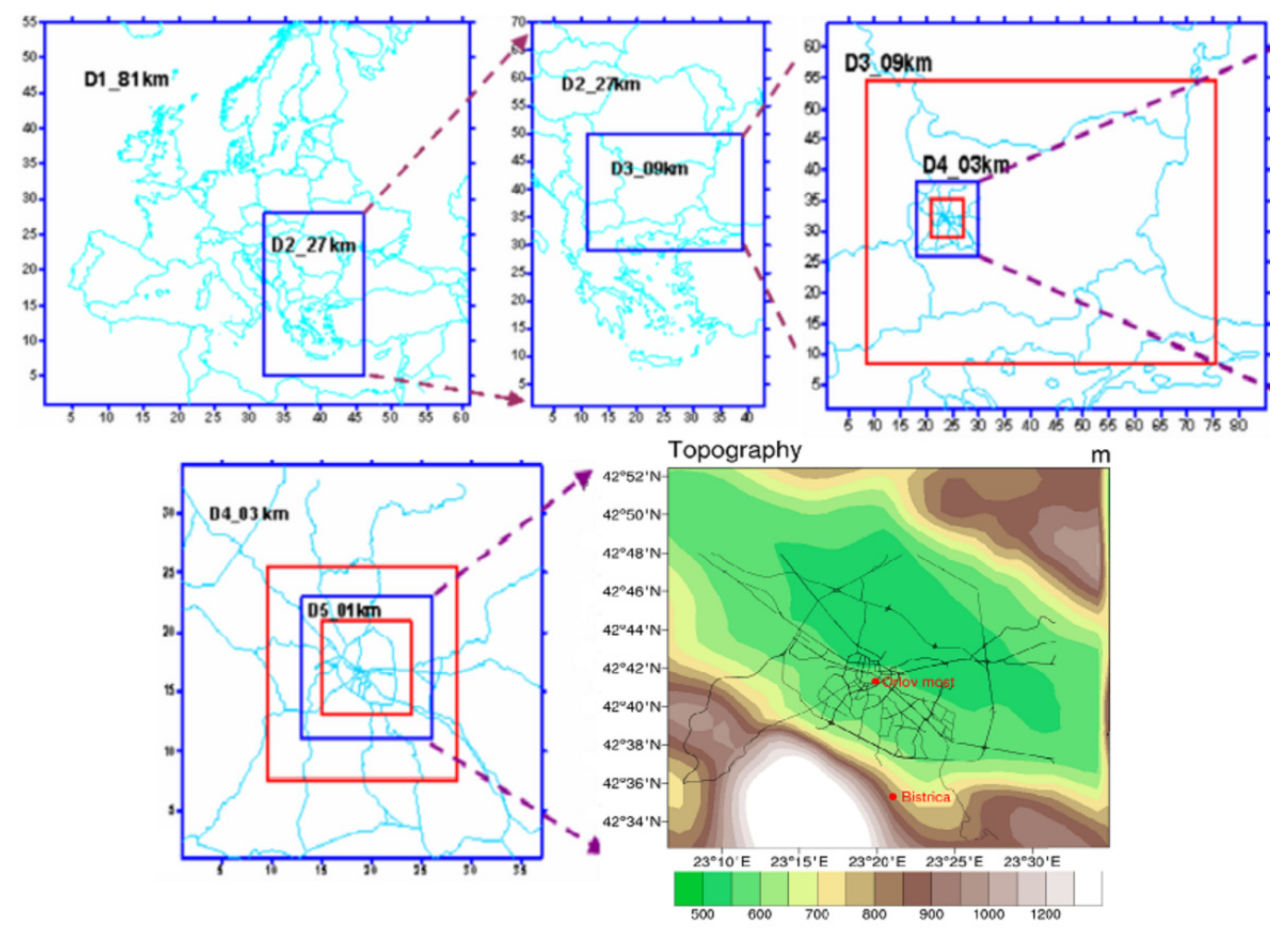
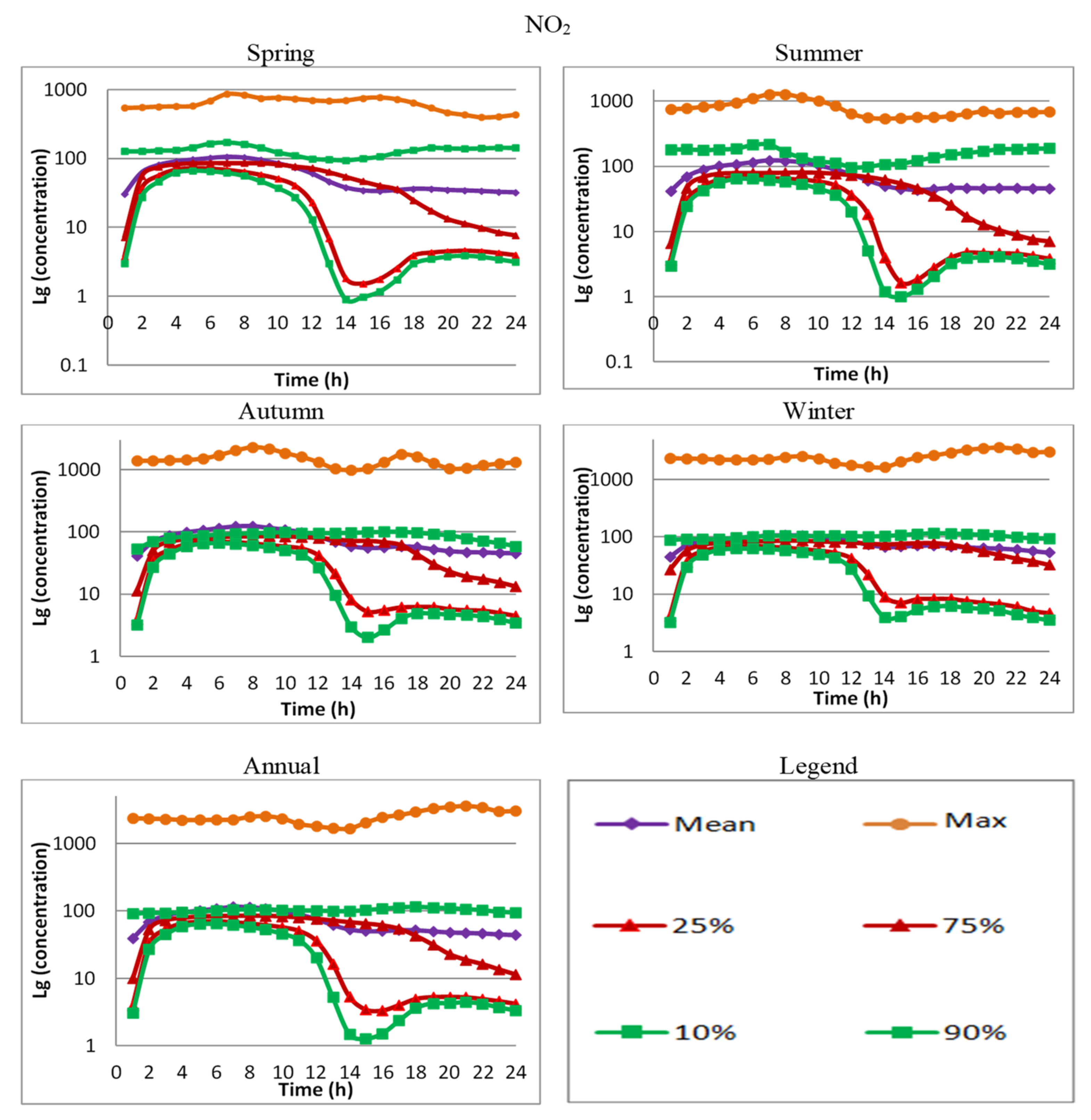
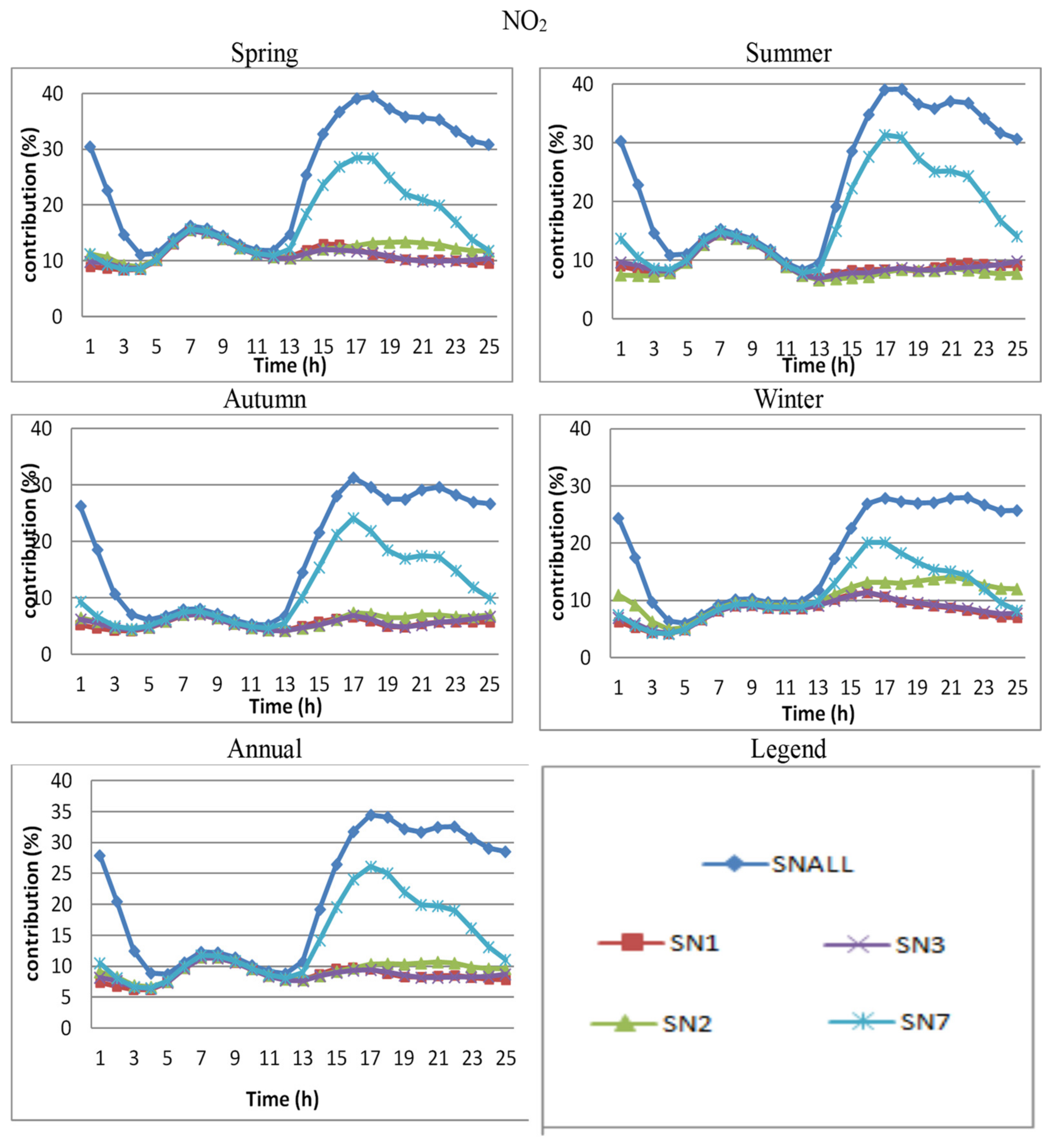
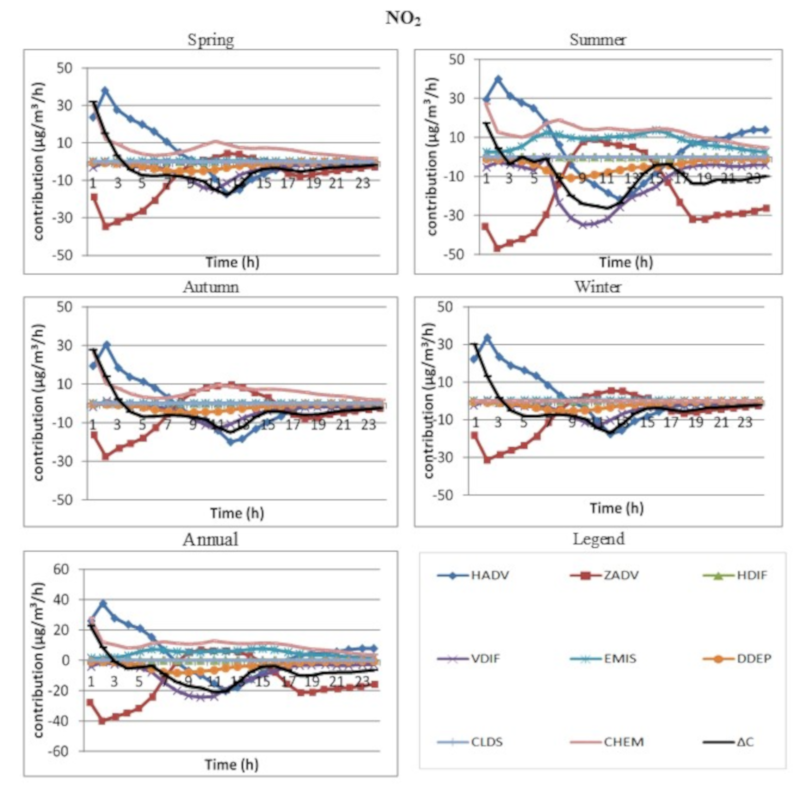
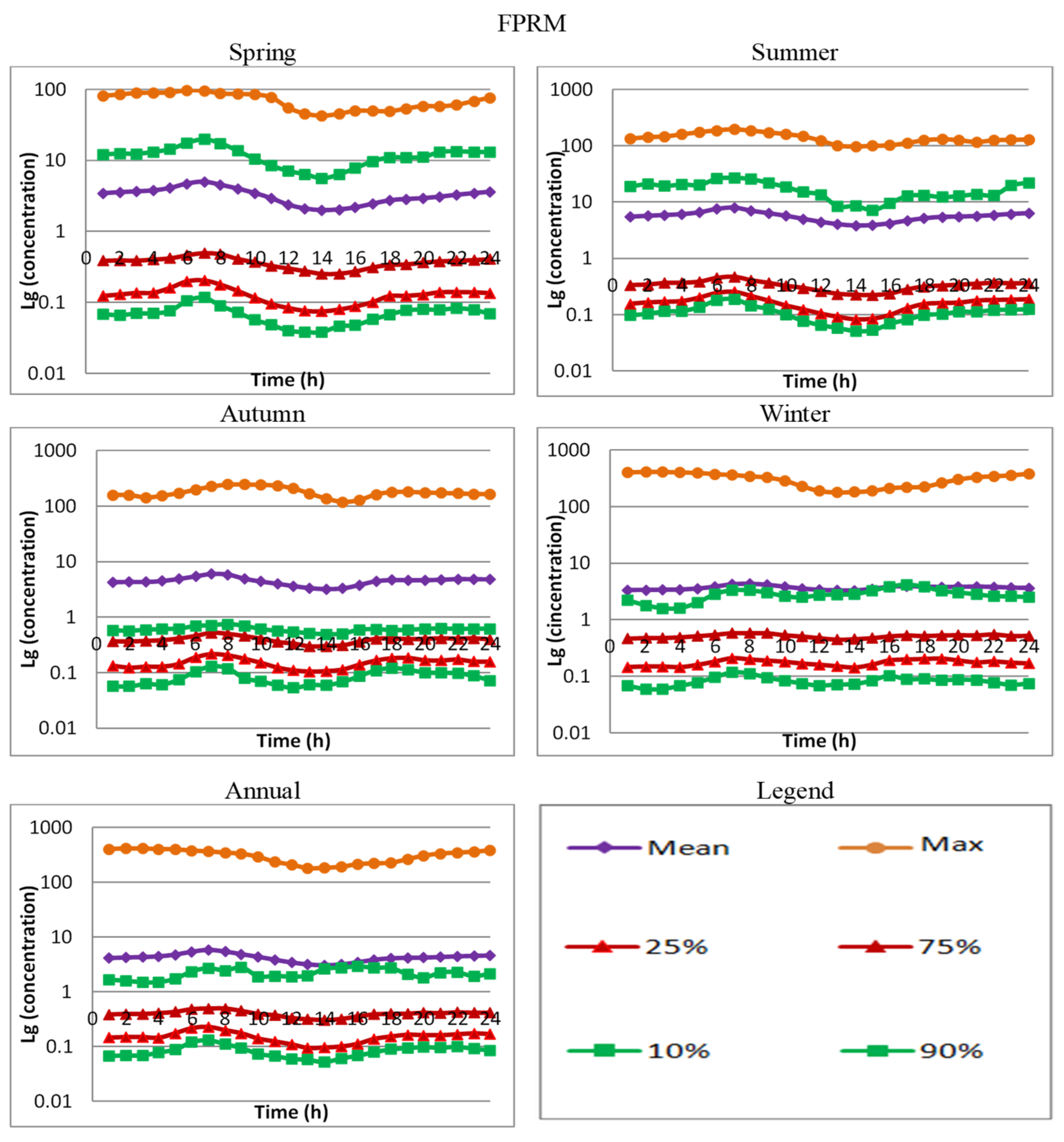
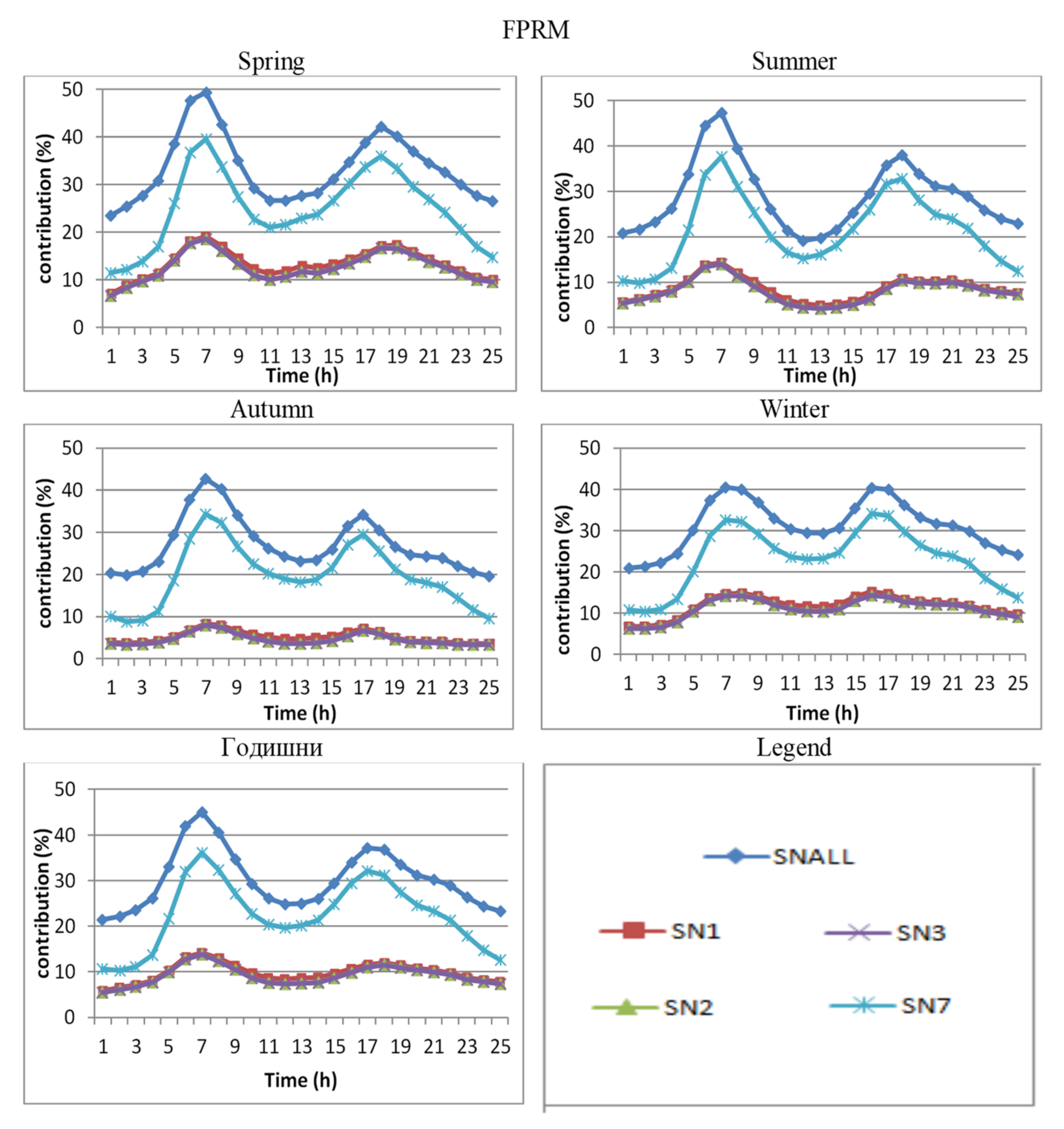
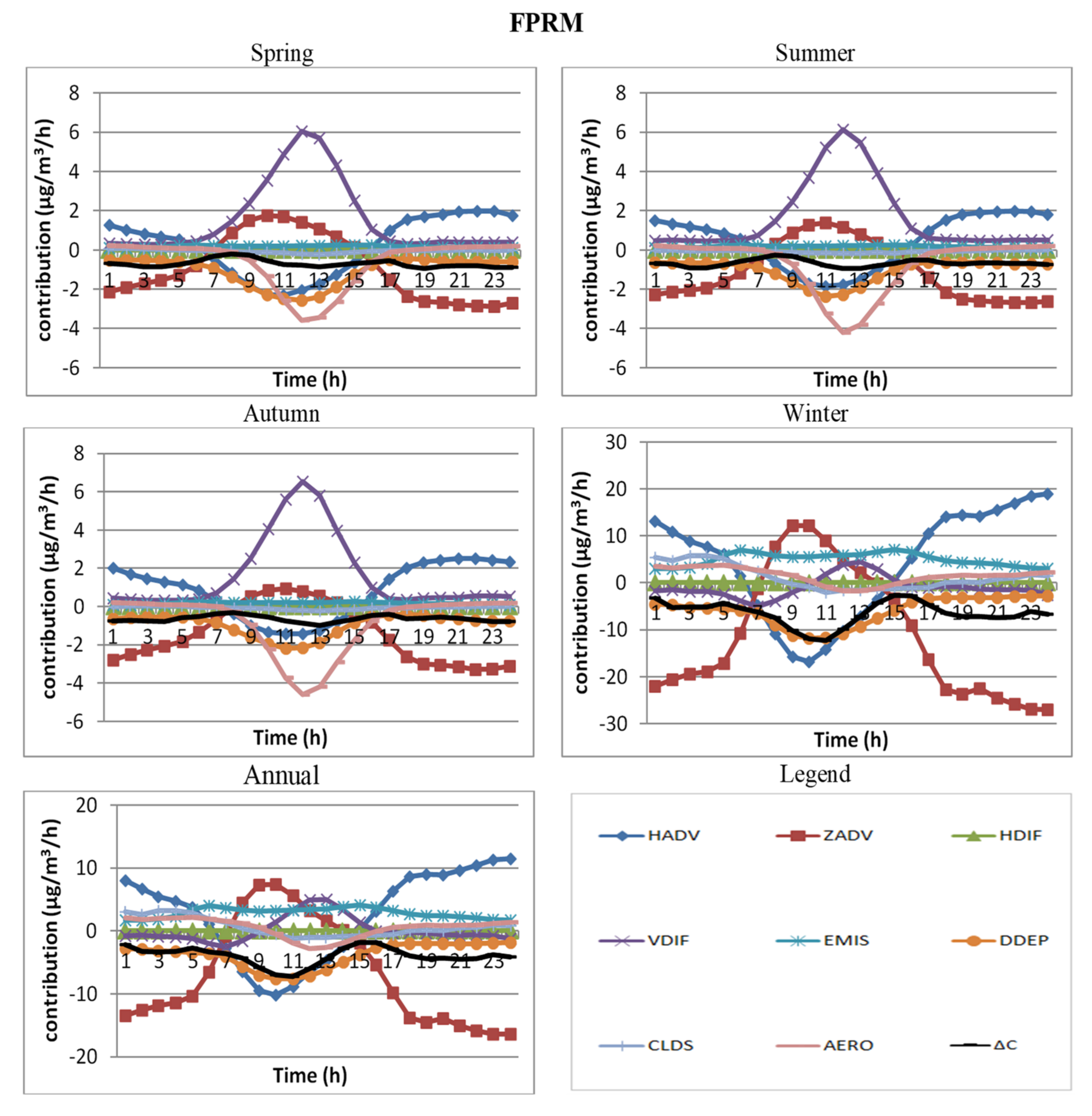
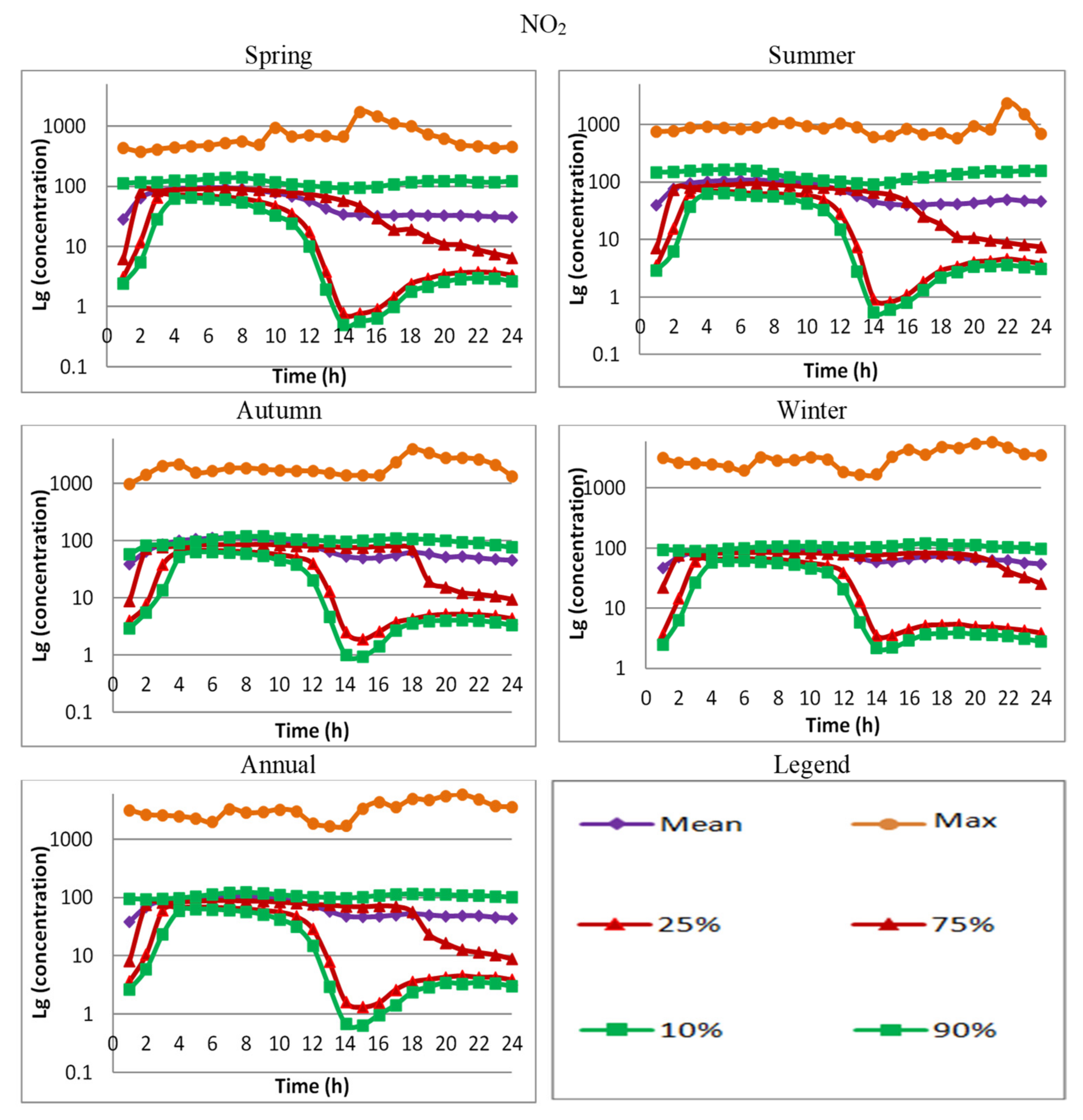
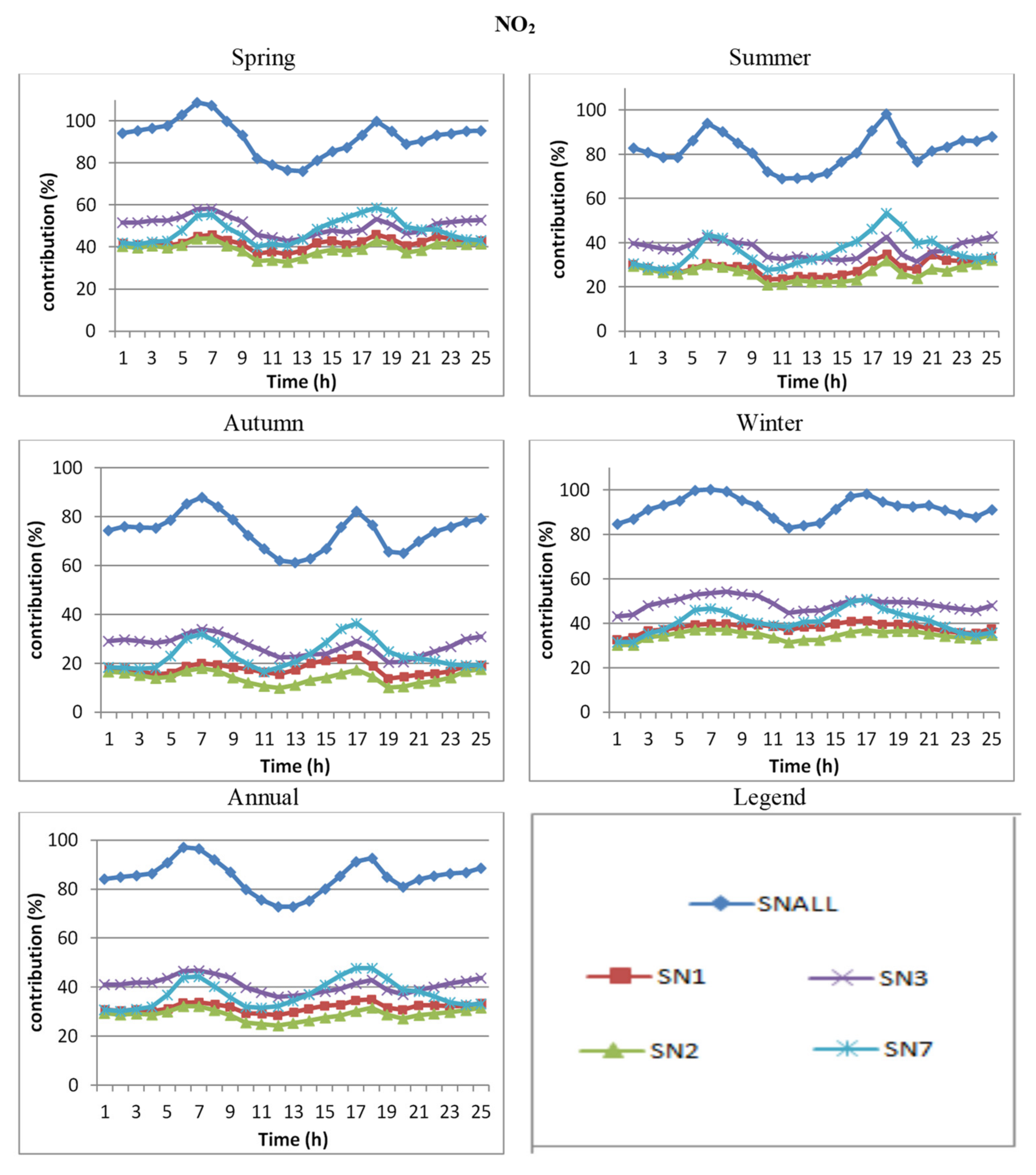
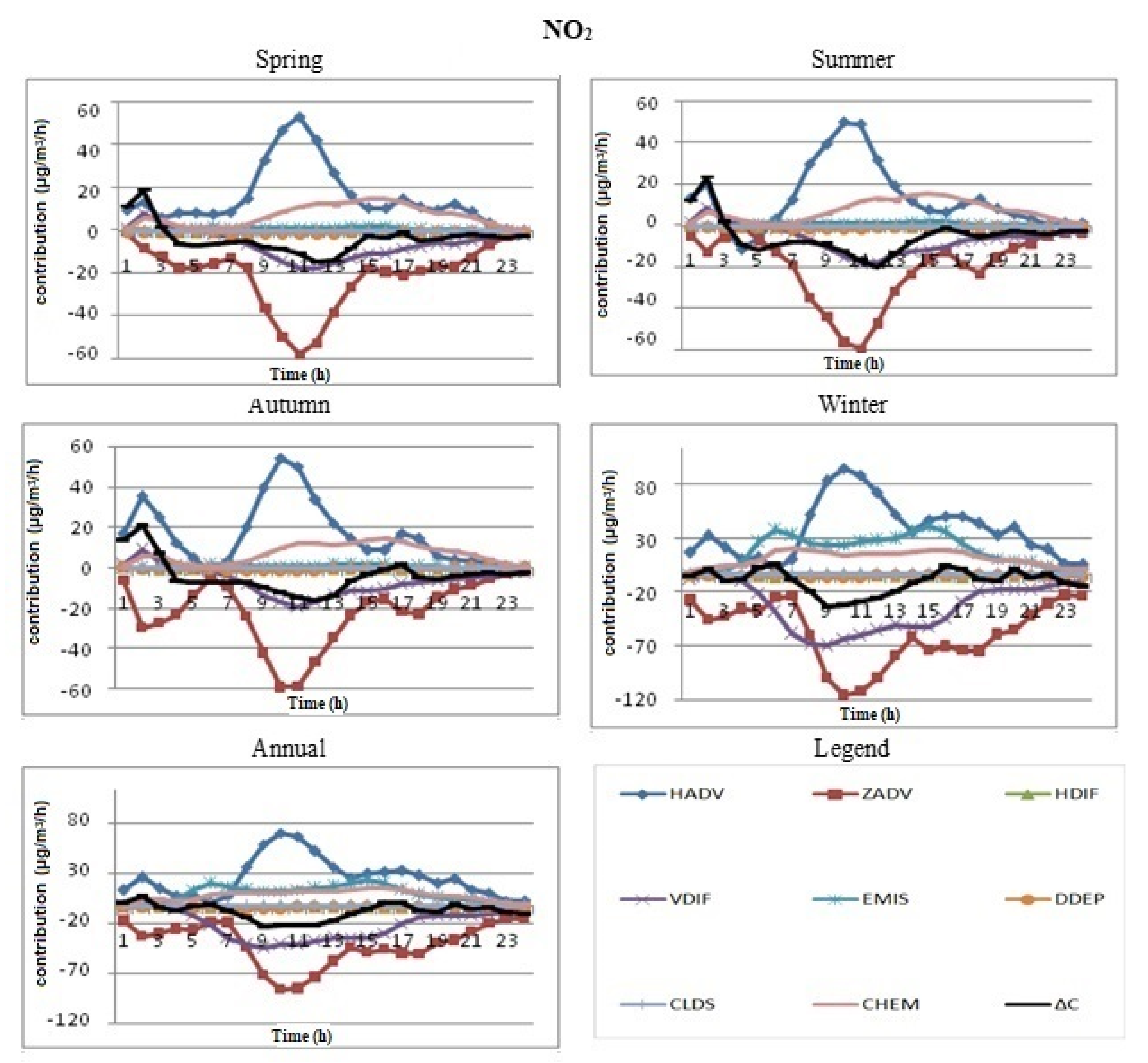
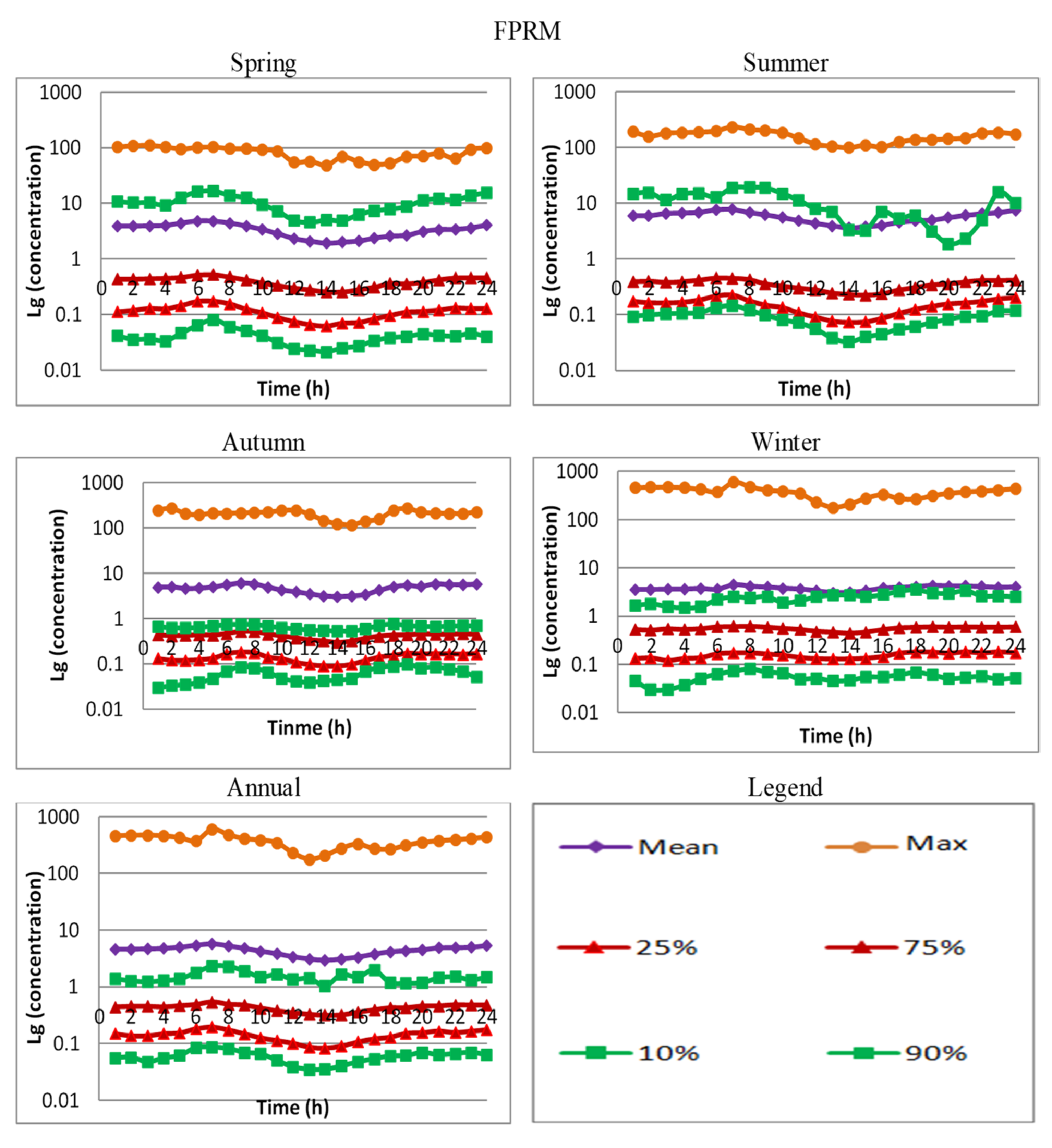
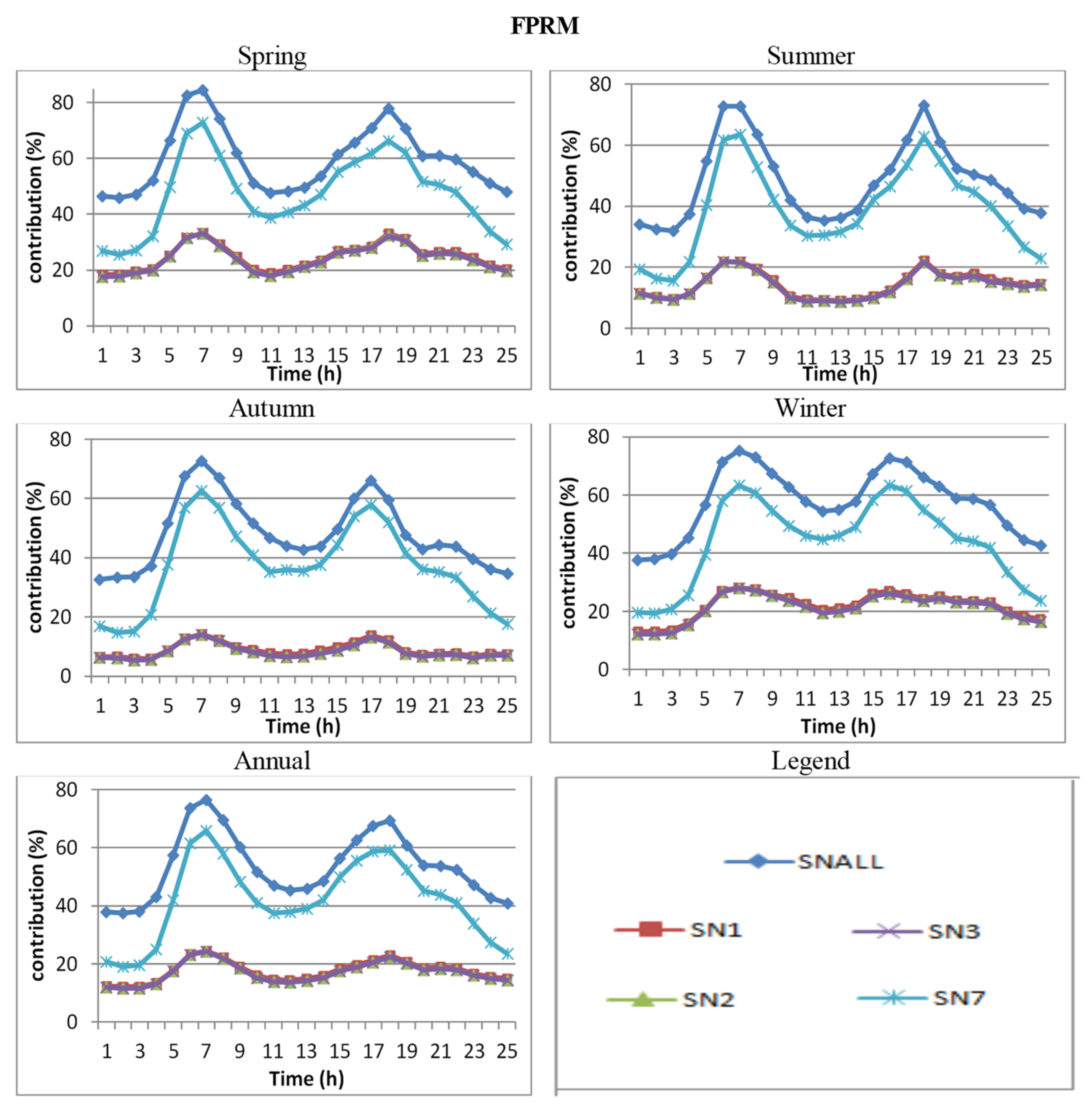
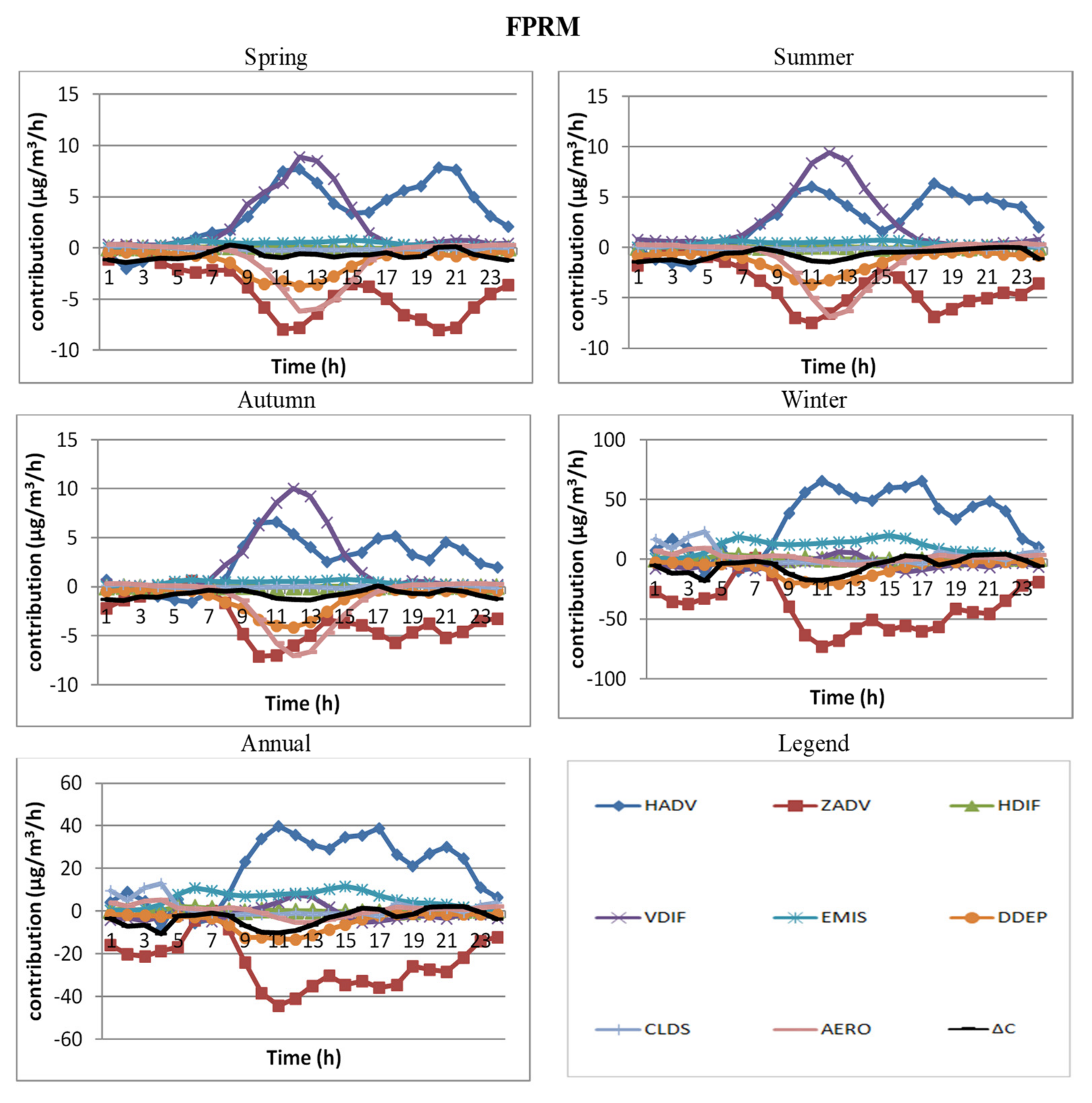
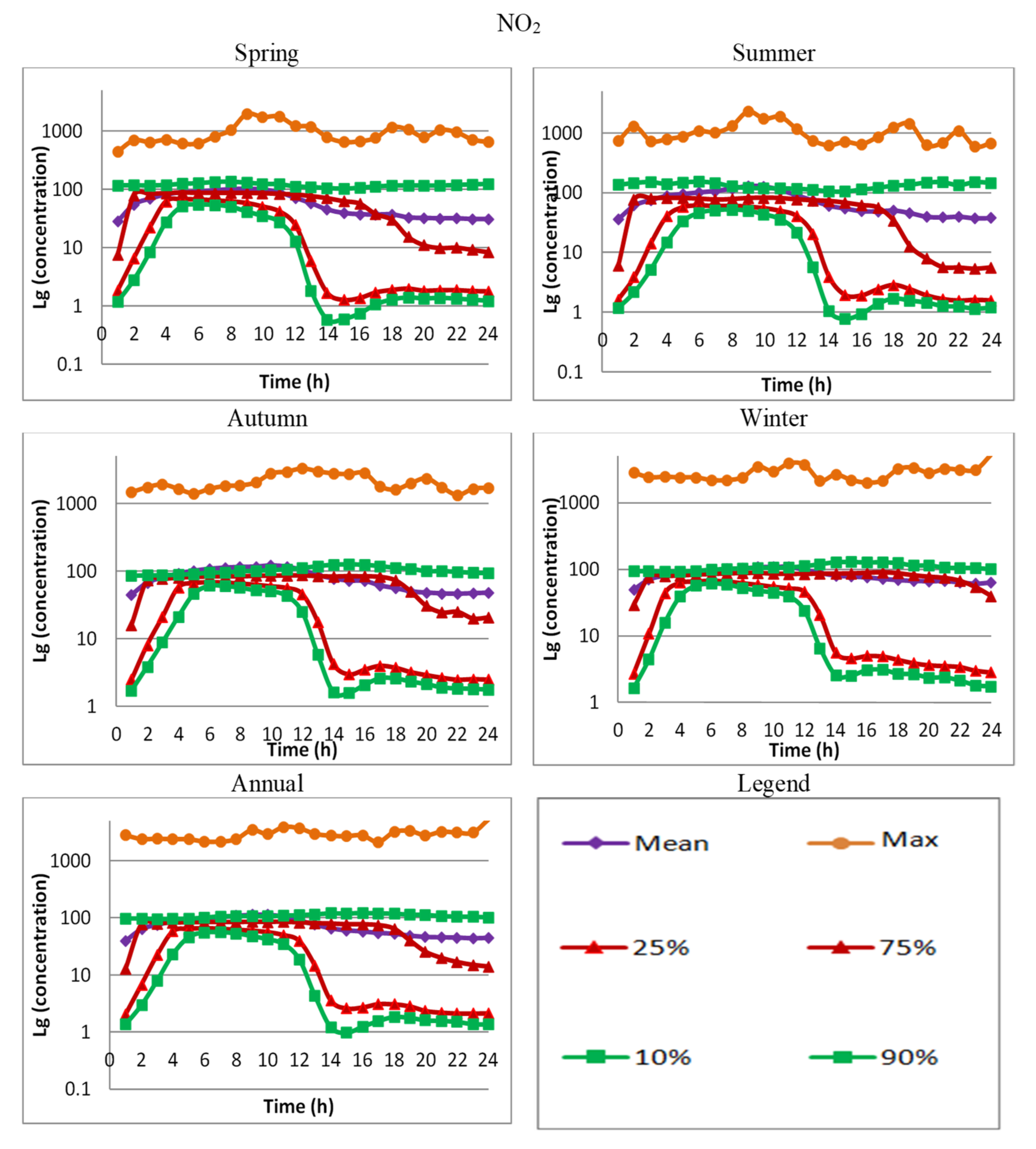
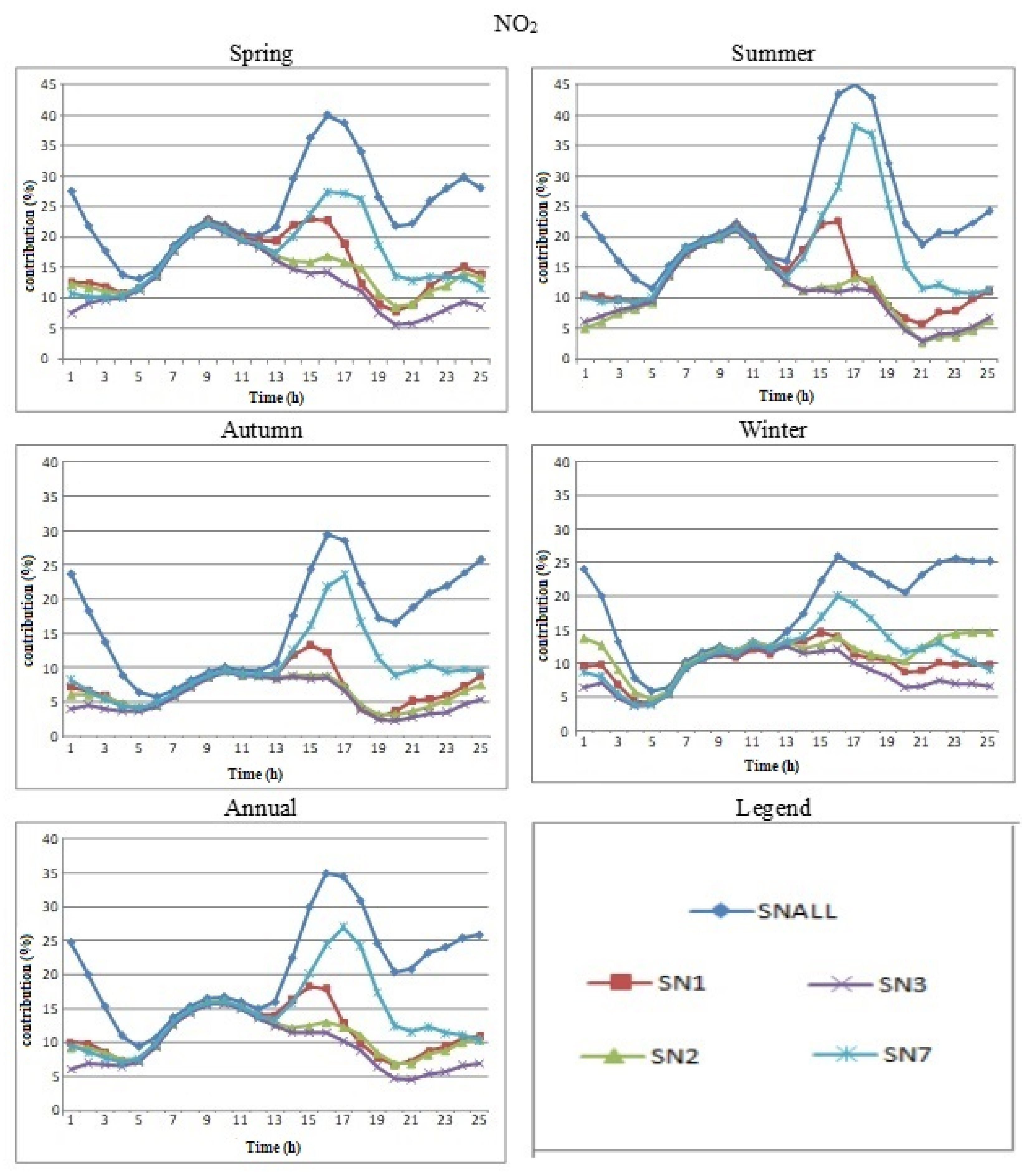
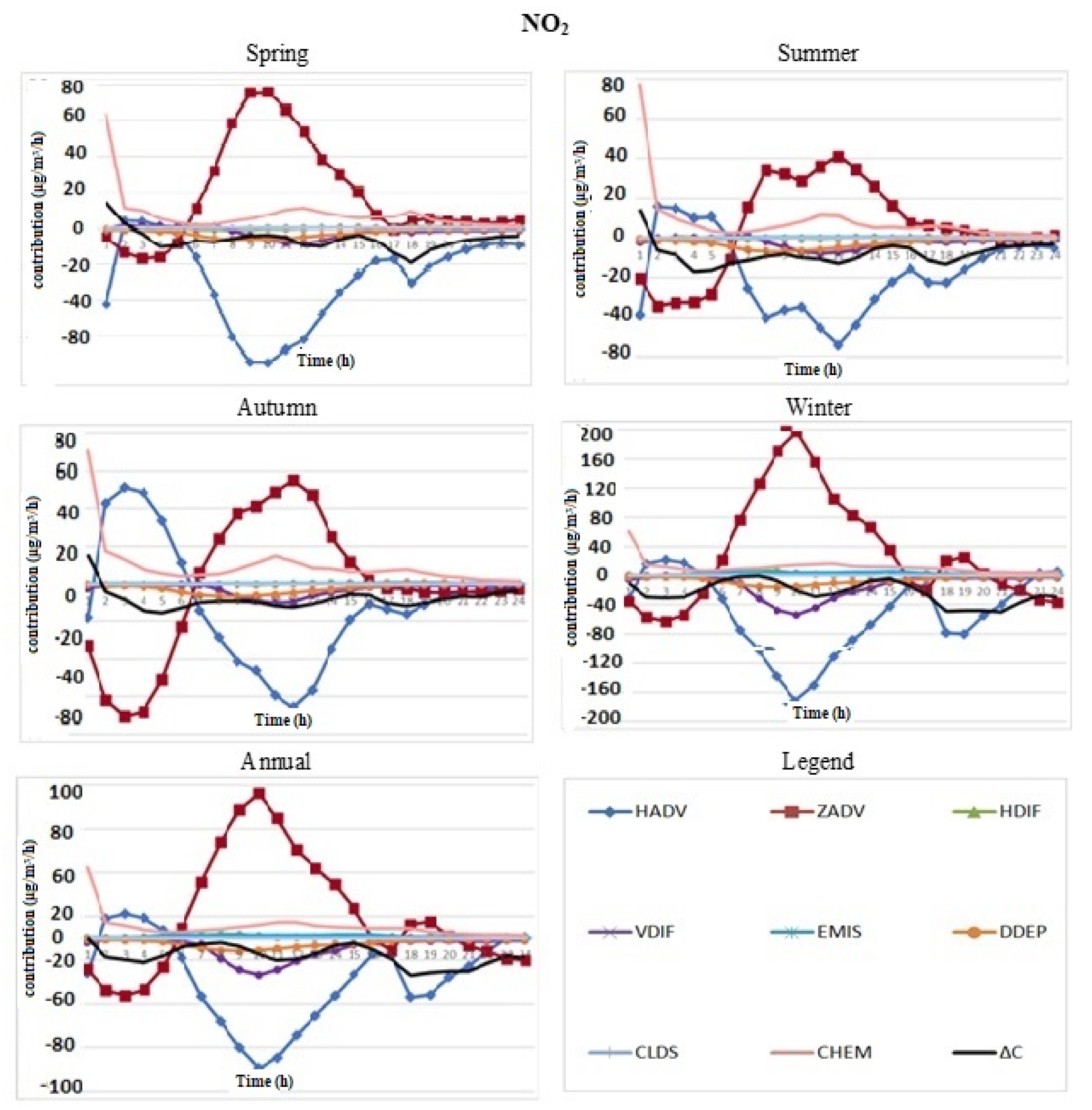
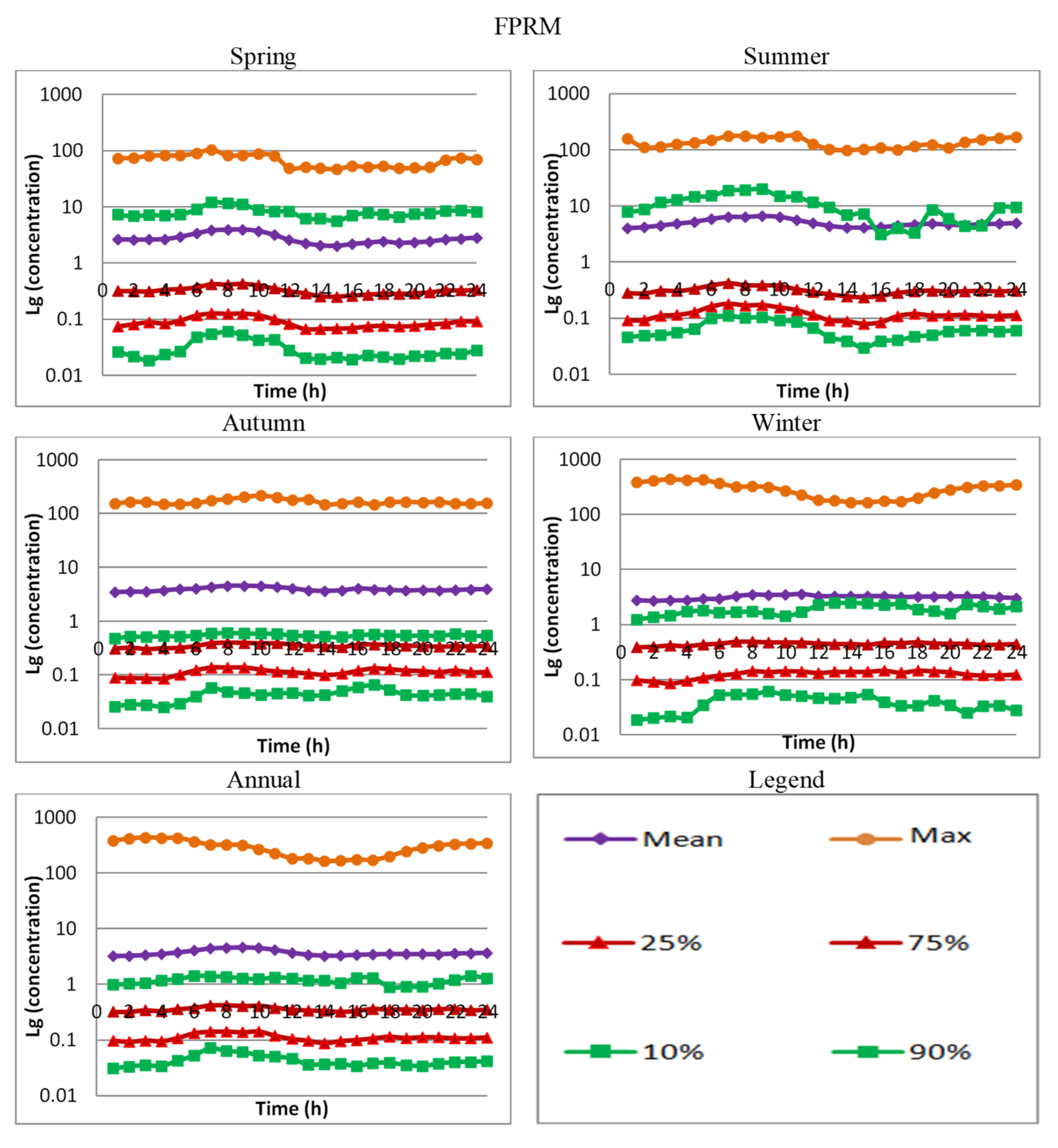
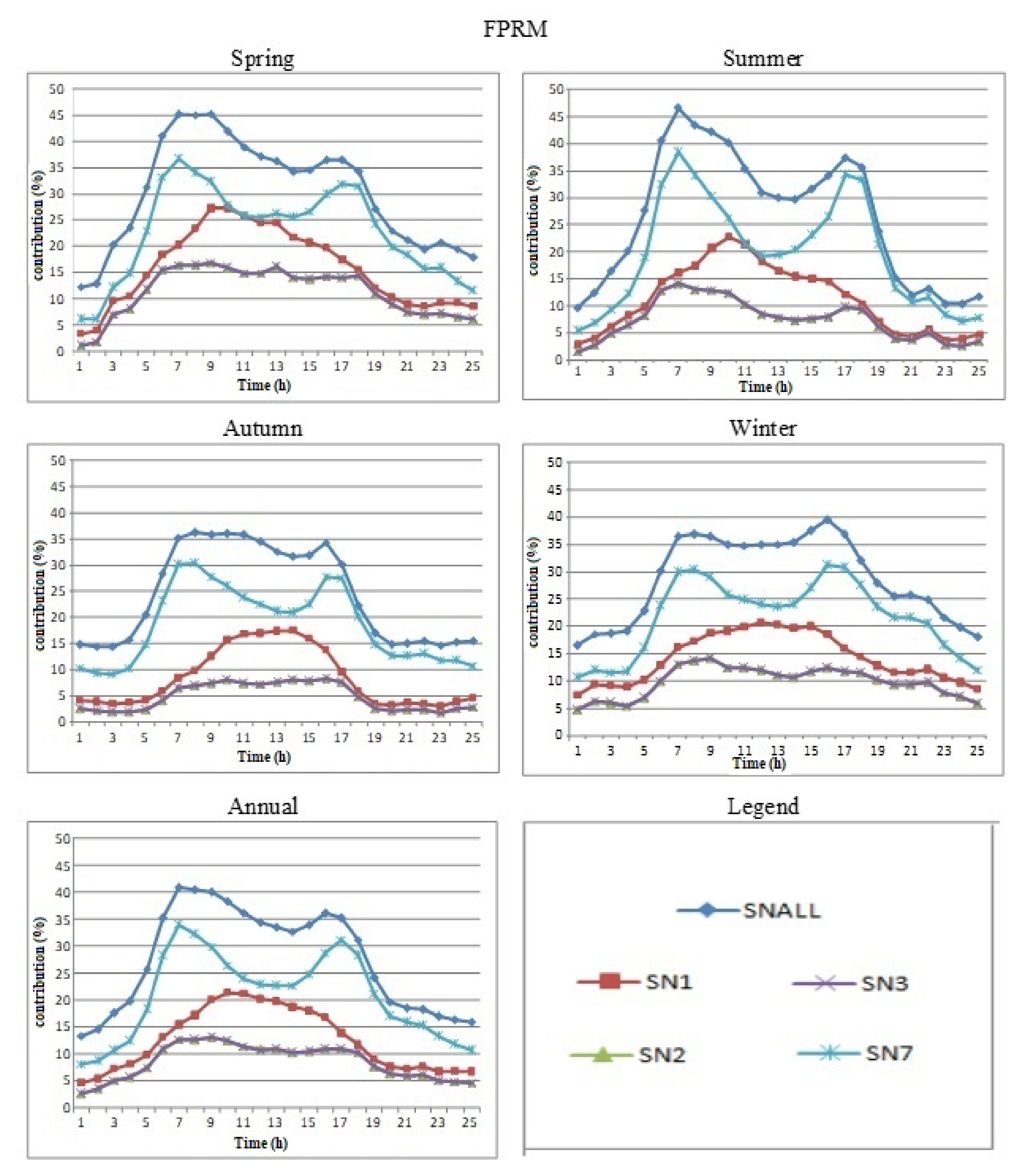
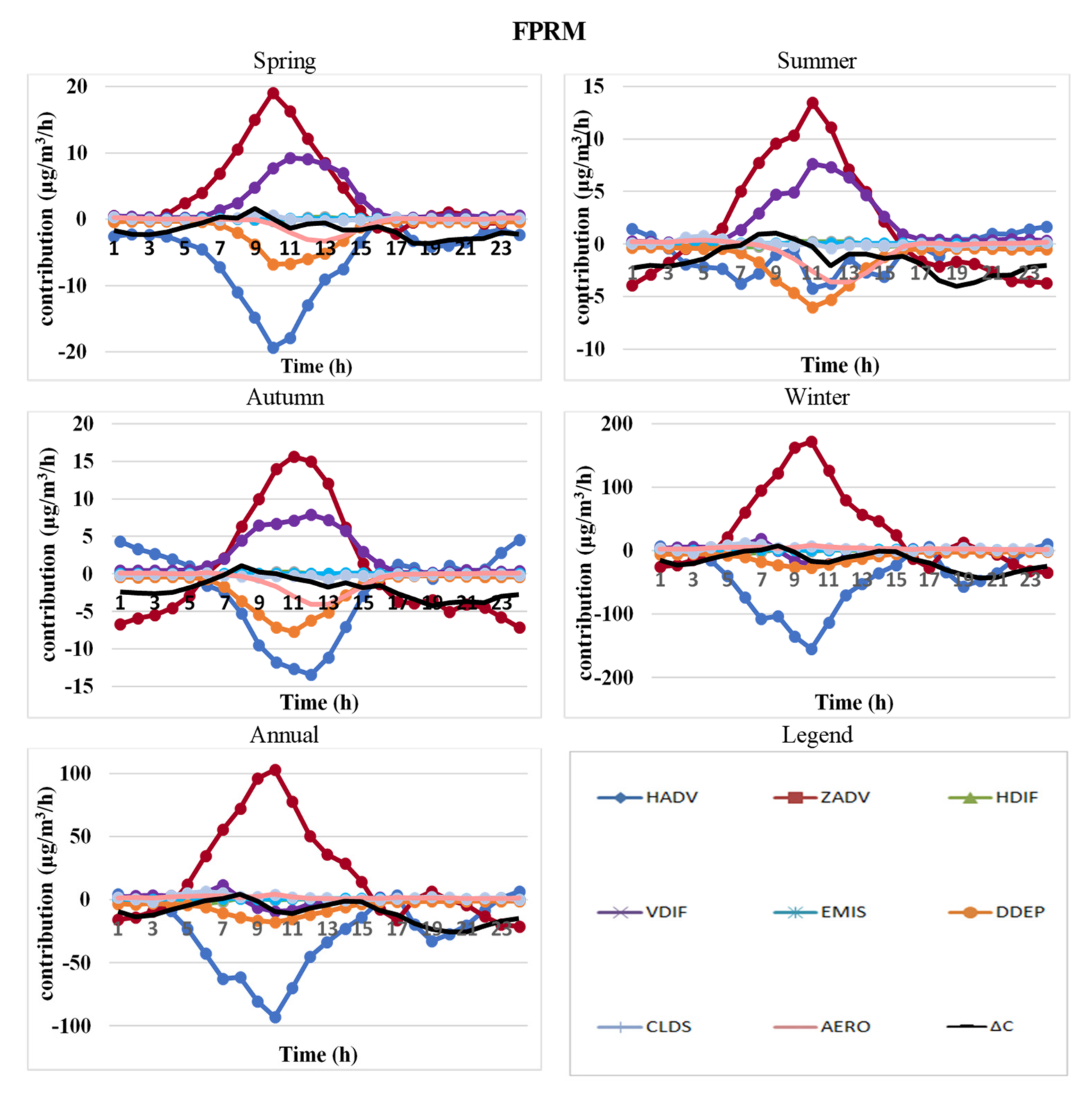
Publisher’s Note: MDPI stays neutral with regard to jurisdictional claims in published maps and institutional affiliations. |
© 2021 by the authors. Licensee MDPI, Basel, Switzerland. This article is an open access article distributed under the terms and conditions of the Creative Commons Attribution (CC BY) license (https://creativecommons.org/licenses/by/4.0/).
Share and Cite
Ivanov, V.; Georgieva, I. Basic Facts about Numerical Simulations of Atmospheric Composition in the City of Sofia. Atmosphere 2021, 12, 1450. https://doi.org/10.3390/atmos12111450
Ivanov V, Georgieva I. Basic Facts about Numerical Simulations of Atmospheric Composition in the City of Sofia. Atmosphere. 2021; 12(11):1450. https://doi.org/10.3390/atmos12111450
Chicago/Turabian StyleIvanov, Vladimir, and Ivelina Georgieva. 2021. "Basic Facts about Numerical Simulations of Atmospheric Composition in the City of Sofia" Atmosphere 12, no. 11: 1450. https://doi.org/10.3390/atmos12111450
APA StyleIvanov, V., & Georgieva, I. (2021). Basic Facts about Numerical Simulations of Atmospheric Composition in the City of Sofia. Atmosphere, 12(11), 1450. https://doi.org/10.3390/atmos12111450





